WILDER SIDE OF OAKLAND COUNTY
As the crisp days of autumn draw near, I increase my explorations of the wondrous world of our wetlands, swamps, and marshlands. They take on a special peaceful splendor in the waning days of summer, especially in the dawn’s early light. The wetland-embracing trails on the wilder side of Oakland County lure me in as surely as honey bees fly to flowers for nectar and pollen. However, this year as in the years before, I will be watchful for and ever wary of one wetland plant in particular. This plant presents a clear and present danger to humans that have the misfortune of making physical contact. Even touching or brushing against any part of this toxic trailside beauty may lead to a world of woe and in some severe cases of exposure, a visit to an emergency department follows.

Hiker’s beware! Poison Sumac (Toxicodendron vernix) is abundant in our county and often “hides” in plain sight on the trail’s edge of many of the parks, State Recreation Areas, and wildlands managed by Huron-Clinton Metroparks, Oakland County Parks and Recreation, the Michigan Department of Natural Resources, Six Rivers Nature Conservancy, North Oakland Headwaters Land Conservancy, and more than a few township and municipality managed parks. I’ve had close encounters, both accidental and intentional, that led to great photo opportunities at Bald Mountain State Recreation Area, Indian Springs Metropark, Rose Oaks County Park, and Independence Oaks County Park. All images in today’s blog were captured at those sites. Bottom line: know what poison sumac looks like and then it’s no longer a hidden danger, but an intriguing and at times spectacularly beautiful plant of our wetland landscapes.

Arm yourself with situational awareness and identification clues of this wetland-loving shrub whose leaves will soon transform from a deep shiny green into fantastic shades of brilliant scarlet. Read on to learn what you need to know about this toxic trailside beauty.
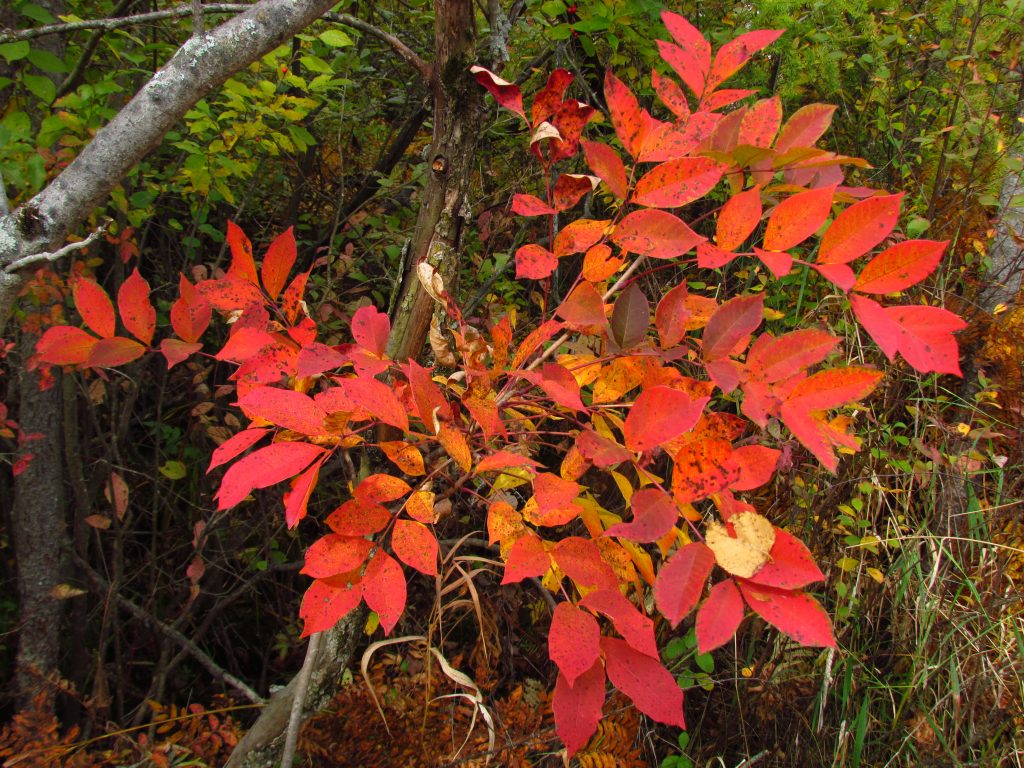
As I write these words in the third week of August, most poison sumac plants have not yet transformed into their eye-catching scarlet attire. Once that occurs, identification gets easier. For now, unless someone is very familiar with the species, they are incredibly nondescript and difficult to identify without experience. Some appear solo in wide-open marshes, while others flourish at the woodlands edge looking like part of the forest and may grow to be over fifteen feet tall. They all present a clear and present danger to trail hikers and swamp-trekkers.

I noticed several boardwalks last weekend where poison sumac has emerged at ankle rubbing heights and the toxic leaves rested on the handrails, just waiting for a non-aware victim to rest an arm.
The shape of poison sumac leaves are one of the clues for identification. Botanists describe them as, “pinnately compound.” That means that the leaf, which is about 18 inches long, is really composed of multiple leaflets joined by short stems. The number of leaflets varies but it will always be an odd number, usually between 5 and 13, due to each leaf having a lone leaflet at the tip.
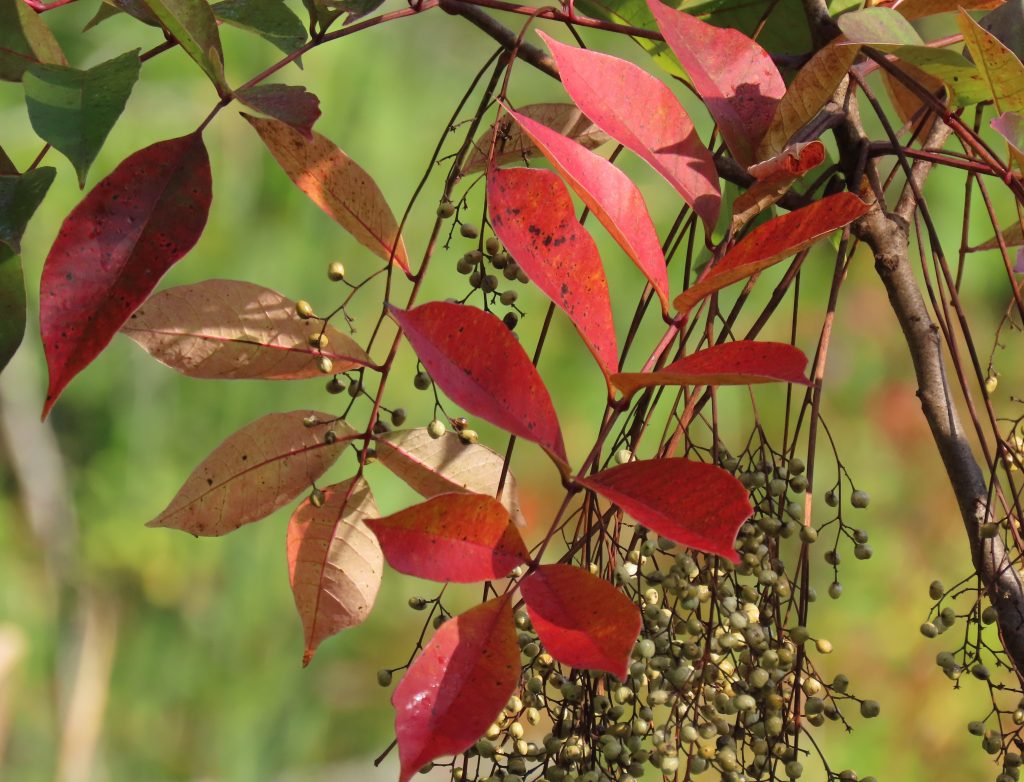
The tiny berries of poison sumac present an excellent identification clue and also help to differentiate it from non-poisonous staghorn sumacs (Rhus typhina), a plant whose fuzzy red berries are sometimes used to make tea. Staghorn sumac berries are in thick clusters that point upwards, almost like an upside down ice cream cone. It also has thick fuzzy stems that resemble deer antlers in velvet, a feature never found in poison sumac. Wetland loving poison sumac has tiny, oval-shaped, whitish yellow berries that dangle downwards as well as leaflets attached to narrow red smooth stems. Those whitish berries warn folks in the know to “Stay away!” as these specimens clearly display in the photos below. Come winter, the berries will be a treat for a variety of birds!

Staghorn Sumac Stem 
Deer with Antlers in Velvet

Staghorn Sumac 
Poison Sumac Berries
Poison sumac is rich in urushiol, the same oily substance found in poison ivy. Direct contact with this toxic oil usually creates a highly irritating rash known as contact dermatitis that may require medical attention. Direct contact includes touching or brushing against any part of the plant including the leaves, stems, flowers, berries, and roots. Even contact with a dead poison sumac plant can cause a rash. The handling of anything that can come into contact with the plant such as clothing, hiking shoes, gardening tools, fishing gear, and even pet fur can also lead to the painful rash. The dermatitis is characterized by bumps and blisters that can be extremely itchy and are usually very noticeable. Swelling may also occur in the area of contact. Eventually, whether they are scratched or not, the blisters tend to break, ooze, and then crust over.
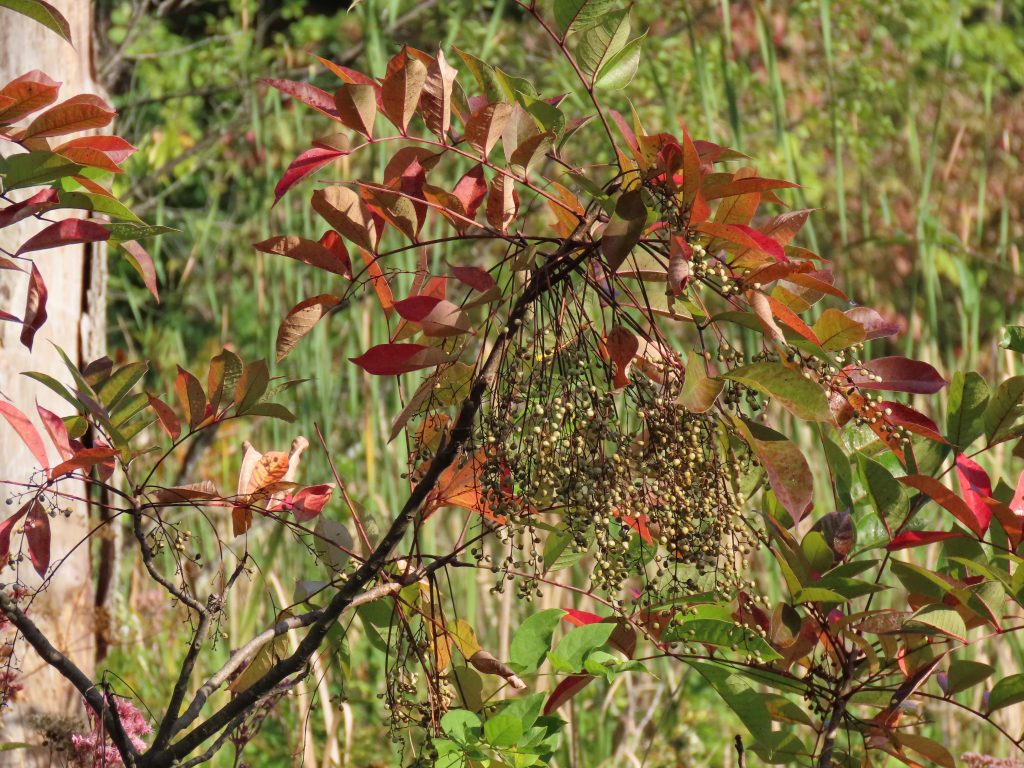
The good news is that the rash that usually appears 24-72 hours after exposure is not contagious, and you can’t catch it from touching the blisters on someone else. However, it can be spread if poison sumac oils remain on skin, clothes, or shoes. The bad news is the oils can bind to smoke during cleanup projects or brush fires and then be inhaled, a fact some homeowners and firefighters have learned the hard way. In addition, some medical professionals are unaware that poison sumac thrives in our region. They are puzzled when a rash that presents itself in the same fashion as a poison ivy rash appears at a face-slapping height and the patient, who is also unaware of poison sumac’s existence, state’s, “I’ve never even walked near poison ivy.” Although dermatologists can be of great help in treating symptoms, avoidance of exposure by being aware of the presence of poison sumac is the way to go whenever possible.

Situational awareness, followed by avoidance, is the best method to avoid the painful rash. Just in case, I keep a popular product known as Tecnu Extreme in my grab and go bag that accompanies me on every day hikes or multi-day explorations. If I think I have been exposed, I use it to remove the invisible oils as soon as possible after the initial exposure. The CDC has excellent information on the hazards of poisonous plants, including poison sumac, and the serious danger of being exposed to urushiol that binds with smoke from a fire and is then inhaled and entered through the lungs.
September is the season for a plethora of nature-embracing outdoor activities under canopies of rustling leaves that will soon take on a kaleidoscope of colors. September is the time to hike our woodland trails and cycle the Paint Creek, Polly Ann, Clinton River, and Michigan Air Line trails. September is for fishing, camping, sharing a quiet picnic on a lakeside hilltop, kayaking our beautiful lakes, and hunting for delectable wild mushrooms. September is the season young children chase after long-leaping leopard frogs hidden in moist meadows and foragers gather the last of the wild blackberries. But as for me, September means I will once again be heading for swampland adventures with an eye-out for poison sumac and looking forward to its stunning transformation into a scarlet beauty. As always, I cherish the words of Thoreau, “I enter the swamp as a sacred place,” even when the swamp harbors poison sumac.
Jonathan Schechter is the nature education writer for Oakland County Government and blogs weekly about nature’s way on the Wilder Side of Oakland County.
Follow along with Oakland County on Facebook, Instagram, LinkedIn, Pinterest, Twitter, and YouTube using #OaklandCounty, or visit our website for news and events year-round.




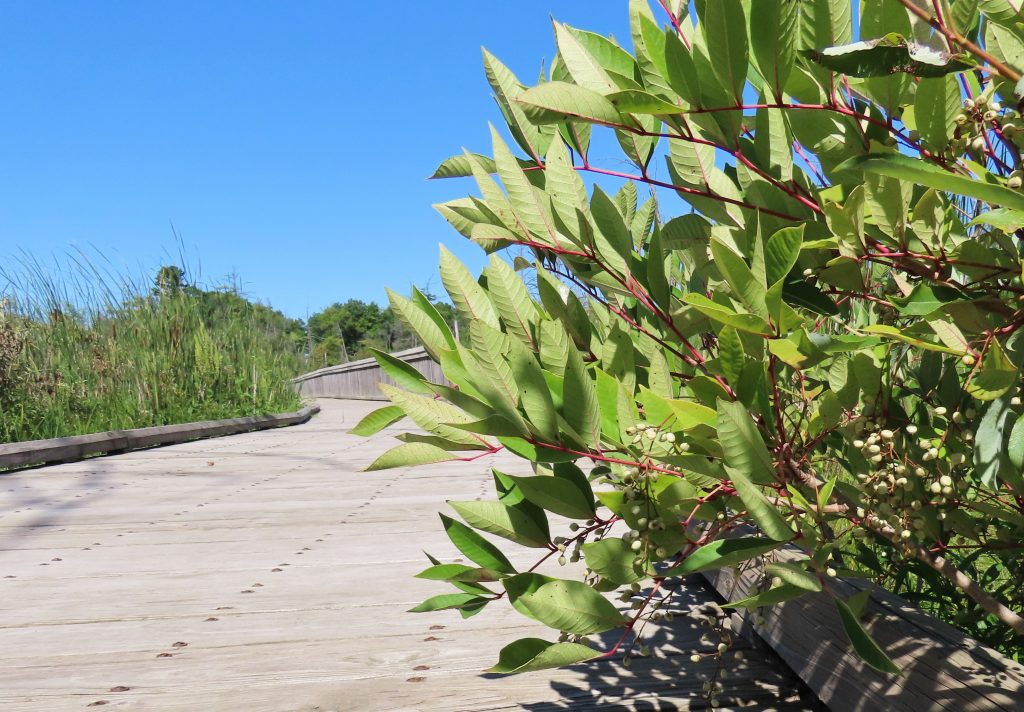


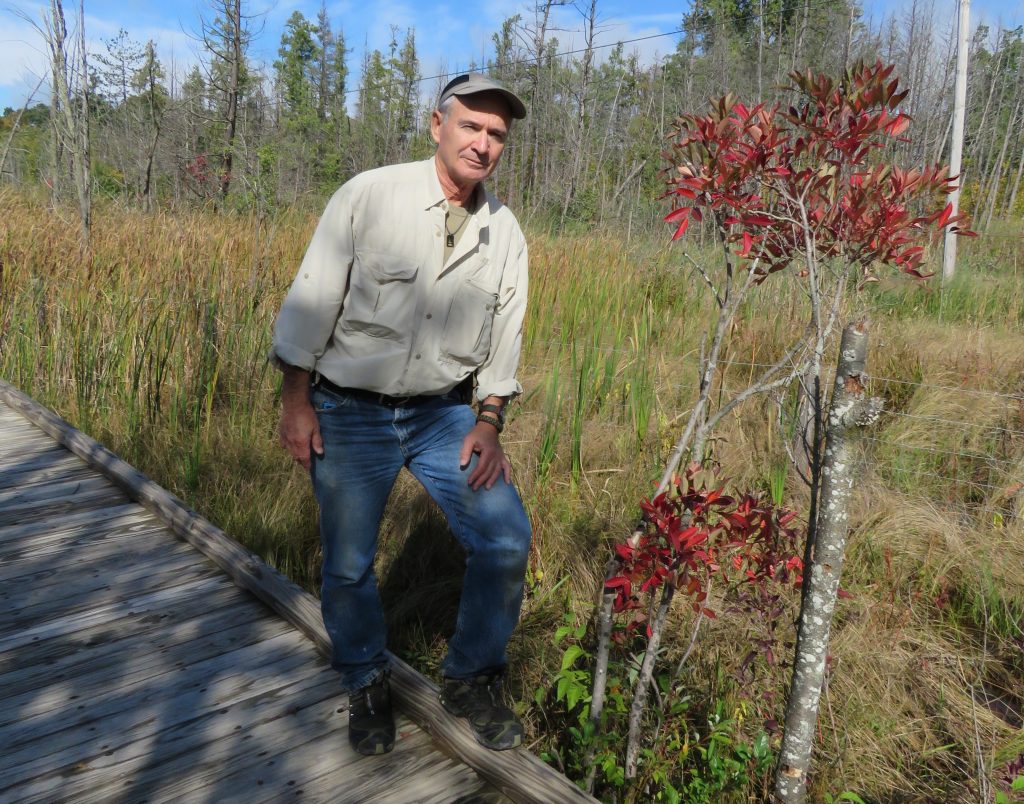
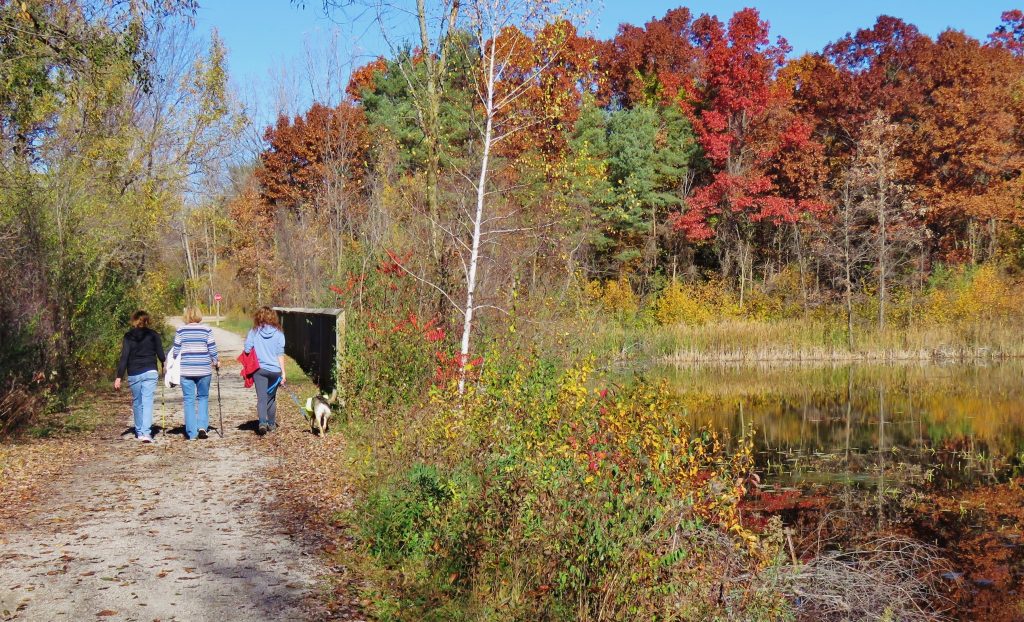
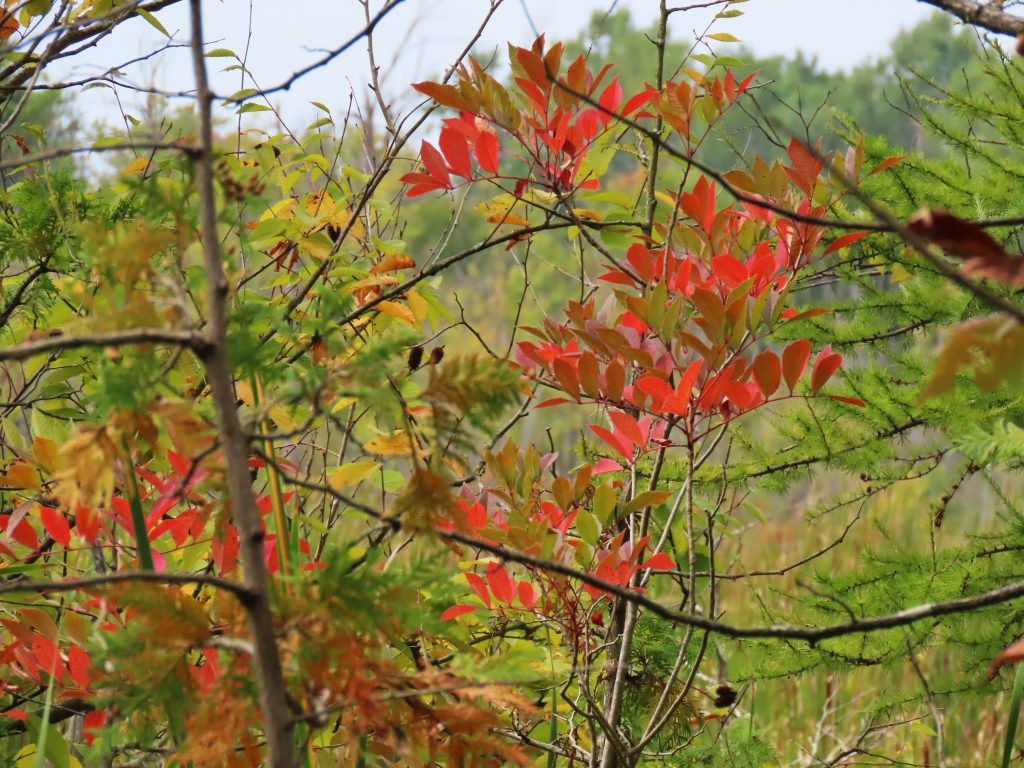
Excellent blog Jonathan and one to keep on hand. I typically don’t venture “off the beaten path” like you when hiking and biking. I get into trouble playing golf. I’m not always on the short grass leading me into dangerous areas resulting in rashes or bee stings. I have a few vials to handle bee stings but I’ll have to invest in the Technu Extreme to keep in my golf bag and Jane’s. Thanks for the “head’s up”.
Thanks for distinguishing between the two, Jon. It is hard to tell, and it could make the difference between a good day and a bad day.
Thank you for this article. Always wondering about this plant and want to avoid it!
Per usual Jonathan, this is a most informative and interesting article. Thanks for your comprehensive attention to detail and for your promotion of our natural environmental community!